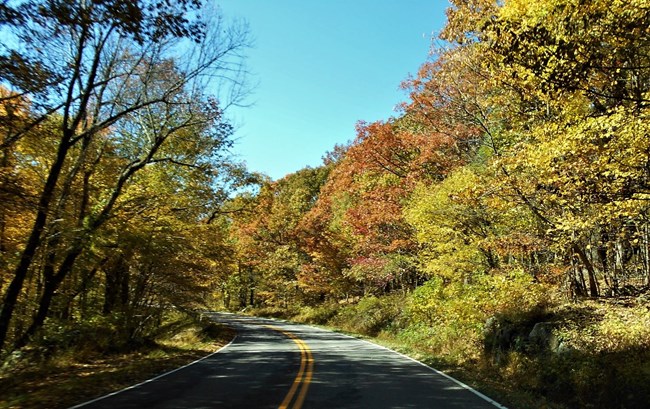Learn about NRCAs
The Natural Resource Condition Assessment (NRCA) Program provides framework, funding, and publishing support to parks to aid in the synthesis and documentation of natural resource conditions. Condition assessment reports are a tool to describe selected park resources, and record a snapshot of their current condition, identify trends, and identify potential or current threats and stressors. Understanding the condition and trend of natural resources is key for parks and NPS planners to appropriately prioritize and allocate stewardship resources.

NPS/Mara Meisel.
The range of elevation, slopes and aspects, rocks and soils, precipitation, and latitude create a mix of habitats. Tens of thousands of living creatures make their homes in the park, from black bear resting beneath rock overhangs, to tiny aquatic insects darting through cool mountain streams. The park is the only place in the world where Shenandoah salamanders live. Today, many of these park features and resources are threatened by poor air quality, acid precipitation, and invasive plants and pests.
Traditional NRCA Report: 2016
In an effort to better understand the condition of the natural resources and processes within Shenandoah National Park, a Natural Resource Condition Assessment was conducted and published in 2016. This assessment was a collaborative project between NPS staff, the University of Maryland and the University of Richmond. This team examined available data and chose a selection of indicators to evaluate within four resource topics:
- Air resources |
||
- Terrestrial resources |
||
- Aquatic resources |
||
- Landscape dynamics |
Shenandoah National Park is unique in that, unlike many other national parks throughout the country, it is a park resulting from managed regeneration. The park was created to enable land that had been heavily used over the centuries for farming, logging and mining to regenerate. Overall, the assessment showed that resources within the Park are of moderate concern. Three resource indicators (birds, viewshed, and landcover) were in good condition; six indicators (ozone, big meadows area, non-native vegetation, water quality, aquatic macroinvertebrates, and roads) were given a condition status of moderate concern; three indicators (wet sulfur and nitrogen deposition, visibility, and fire dependent systems) were given a condition status of significant concern; and one indicator (atmospheric mercury deposition) was not given a condition status.
For other reports and natural resource datasets visit the NPS Data Store.
Source: NPS DataStore Collection 7765 (results presented are a subset). To search for additional information, visit the NPS DataStore.
Last updated: June 30, 2022
